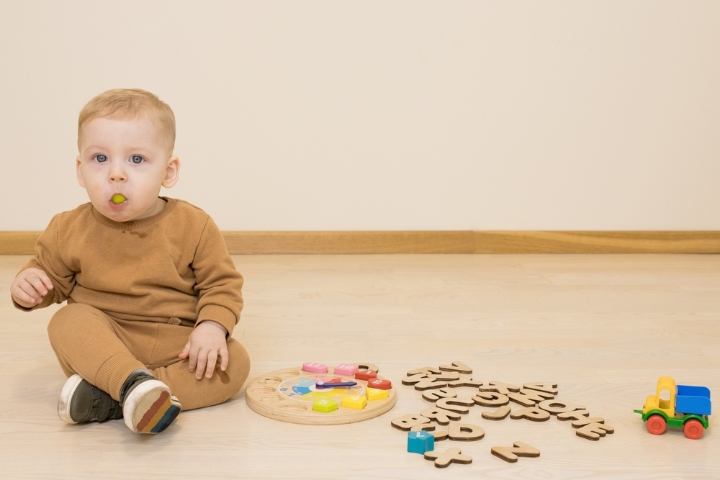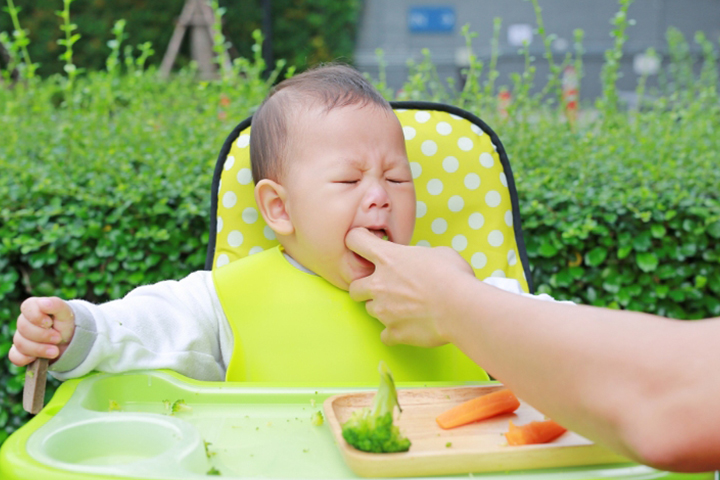
Image: Shutterstock
As a parent, you’re always wanted around your little ones to feed them, entertain them, and, most importantly, protect them. However, parenthood is filled with unexpected experiences revolving around your litter superstars’ well-being. One incident is the choking hazard. Babies tend to put everything in their mouths, which can put them at risk of choking. But with a few preventative measures and knowledge about hazardous items, you can reduce the chances of your baby experiencing this horrible incident.
This article will discuss a few things you should know about choking that might help you prevent or even solve this problem effectively.
Things Babies Can Choke On
Choking is a severe hazard for babies, as their tiny bodies and developing lungs make them particularly vulnerable to choking on foreign objects. While parents must be attentive to potential choking hazards in the home, some everyday items pose an increased risk to infants. So knowing these most common choking hazards can help parents protect their little ones from harm. Here’s a list of items you should be watchful of when lying around your little star.
1. Foods
Image: Shutterstock
Foods like nuts, popcorn, and grapes are especially dangerous because they can quickly lodge in a baby’s throat due to their size or shape. Therefore, parents should always cut fruits into smaller sizes before giving them to babies so that they do not threaten to be swallowed whole or stuck in the throat while chewing too hard. Additionally, when giving liquids such as milk or juice, ensure that these are not too thick. This increases the likelihood that these will block the airway if inhaled instead of appropriately sipping from a cup with handles designed specifically for little hands.
2. Toys
Image: Shutterstock
Toys with removable parts also need special attention since even tiny pieces may be able to fit inside an infant’s mouth when playing with them unsupervised. This includes stuffed animals whose eyes could come off if pulled too hard by curious hands!
3. Coins
Image: Shutterstock
Coins or buttons should never be given as playthings either since these items have smooth surfaces, which makes it easy for babies to swallow without realizing what has happened until after it has already been ingested!
4. Balloons
Image: Shutterstock
Finally, balloons and latex rubber bands must also remain out of reach from young children. They might try putting these materials into their mouths without knowing better that they can cause suffocation when inhaled accidentally while trying to explore different tastes!
All caregivers (including grandparents) must understand how dangerous particular everyday objects may seem. However, they still present significant risks if left unsupervised during playtime. Again, prevention is critical here, so take extra caution with your precious bundle of joy whenever possible!
Ways To Prevent Choking In Babies
Image: Shutterstock
Choking is one of the leading causes of death in babies and toddlers(1). It can be a terrifying experience for parents, but they can take steps to prevent it from happening.
- The first step is to keep small objects away from children not old enough to understand the dangers associated with them. This includes coins, paper clips, and other small items that could fit into their mouths or throats if swallowed.
- It’s also essential for parents to supervise babies while eating so that food doesn’t get lodged in their throat or windpipe accidentally. A good rule of thumb is to cut food into tiny pieces before giving it to them and make sure they chew thoroughly before swallowing anything larger than a pea-sized morsel at once. Also, avoid giving babies hard candy since these have been known to cause choking incidents due to their shape and size when placed inside an infant’s mouth.
- Finally, it’s essential for all caregivers (including babysitters) to know how to perform CPR on infants should an emergency arise requiring such action. Parents should consider taking courses offered by local hospitals, which will teach proper techniques and provide information about what to do if their child chokes on something while under their care.
By following these simple steps, you can help ensure that your baby stays safe from harm caused by accidental choking incidents.
Measures To Take Upon Choking
If your baby is choking, it can be a very frightening experience. Fortunately, you can take steps to help them. The first thing to do is call 911 or seek medical attention immediately. The next step depends on whether or not your baby has started breathing again.
- Remain Calm
Image: Shutterstock
The most important thing is to remain calm and assess the situation before taking action. It can be horrifying when you think your baby is choking, but staying relaxed will help you get through it safely. Take deep breaths, focus on what needs to be done to breathe again, and keep trying until they breathe normally or medical attention arrives. It may take some time, but eventually, everything will return to normal as long as everyone remains calm throughout the process!
- Check The Item Causing Choking
Image: Shutterstock
The first step if your baby is choking should be to check their airway for any obstructions that may have caused the choking episode. If you see something blocking their airway, such as food or another object, try using two fingers in a sweeping motion towards the back of their mouth to remove it safely and quickly without pushing it further down into their throat or causing injury with sharp objects like fingernails or tweezers.
- Give Them Chest Thrusts
Image: Shutterstock
If they are still struggling with breathlessness after trying these measures, perform back blows followed by chest thrusts until an ambulance arrives or until your child starts coughing up whatever was blocking their airway. Make sure you use five quick back blows between every set of chest thrusts so as not to cause any more harm than necessary while dislodging whatever object might be stuck there!
All in all, handling a baby who is getting out of breath is the last thing a parent would want to see. So, being careful and sensible during these mishaps can help them counter such tragic incidents. Hopefully, the solutions mentioned above will help you and other responsible caretakers to reduce the chances of choking in their babies. In the comment section below, let us know about your experience with baby choking and how you’d manage the situation.




















